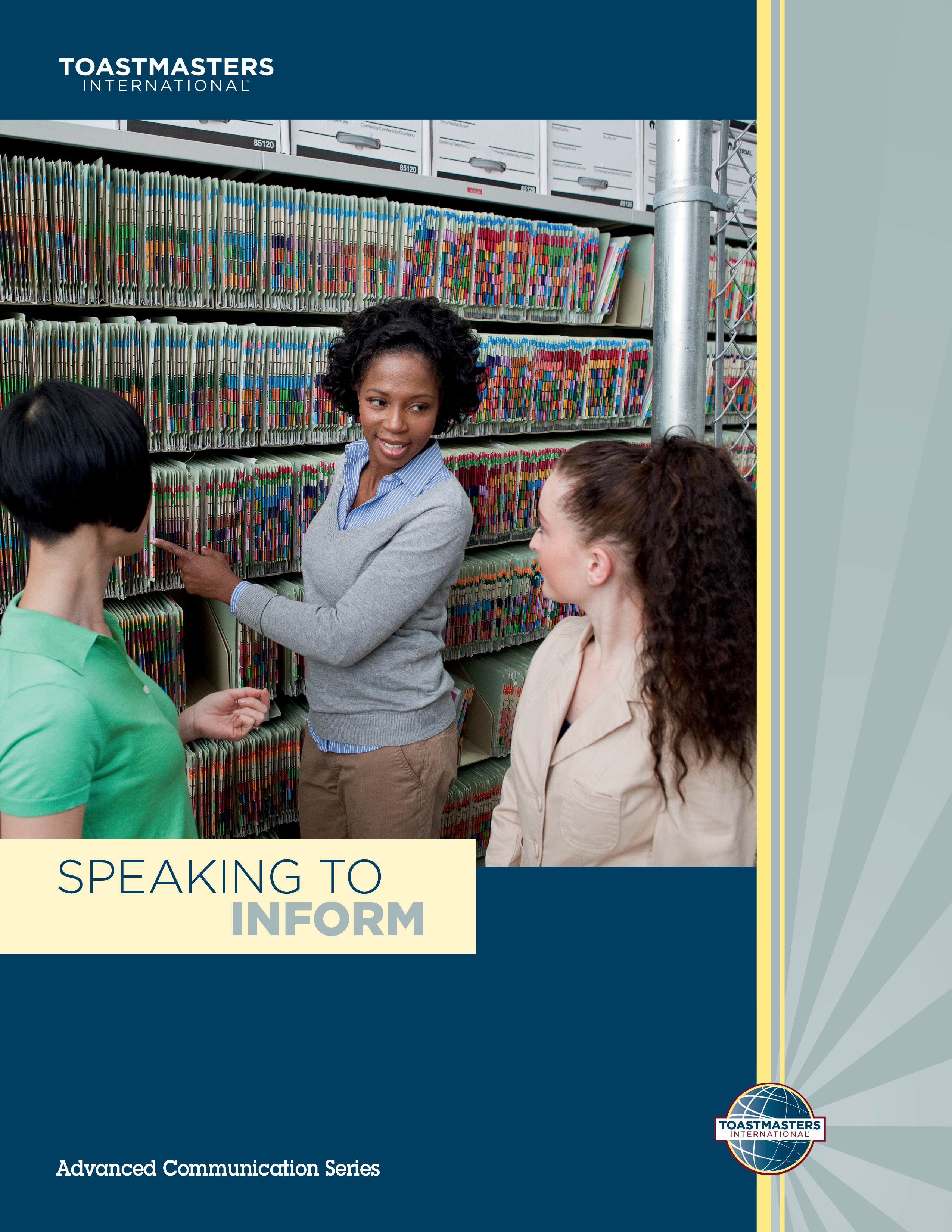Project #1: The Speech To Inform
Executive Summary:
Informative speeches can be educational, entertaining and enjoyable for your audience, if you plan them carefully. Make the information relevant to your listeners, relate it to what they already know, and involve them in some manner. Keep the information organized and present it in an interesting manner. Remember to repeat the points you want listeners to remember and use visual aids to aid in retention.
Objectives:
- Select new and useful information for presentation to the audience
- Organize the information for easy understandability and retention
- Present the information in a way that will help motivate the audience to learn
- TIME : 5 to 7 minutes
The purpose of this talk is for the speaker to present an informative speech of five to seven minutes. The information should be presented in an interesting manner with clear organization. The speaker should support the facts or points with statistics, quotes, or experts' opinions.
Project #2: Resources For Informing
Executive Summary:
Knowledge of your audience often determines whether your speech will be successful. Strive to find out as much as possible about your listeners, including their ages, occupations, economic status, education, political orientation and hobbies. Then demonstrate your knowledge of the subject, making sure you have the right support material. Use visual aids appropriately.
Objectives:
- Analyze your audience regarding your chosen subject
- Focus your presentation at the audience’s level of knowledge
- Build a supporting case for each major point using information gathered through research
- Effectively use at least one visual aid to enhance the audience’s understanding
- TIME : 5 to 7 minutes
The purpose of this talk is for the speaker to inform the audience on a subject of interest in five to seven minutes. The talk should be directed to the interests of the audience, with each major point strongly supported by research. The speaker is required to use at least one visual aid to enhance the audience’s understanding.
Project #3: The Demonstration Talk
Executive Summary:
A demonstration is the most effective way to explain a process, activity or product. Demonstration can be done through body movement (showing a dance step or skiing technique), showing a physical object, or displaying a model. Carefully rehearse the demonstration and be sure the audience can see it. Anticipate any problems that may occur and plan how to handle each other.
Objectives:
- Prepare a demonstration speech to clearly explain a process, product, or activity
- Conduct the demonstration as part of a speech delivered without notes
- TIME: 5 to 7 minutes
The purpose of this talk is for the speaker to present a demonstration talk of five to seven minutes on a process, product, or activity. The speaker may use body language, an actual object, or a model for the demonstration. The speech, delivered without notes, should keep the audience interested, and each segment in the demonstration should be explained clearly and specifically.
Project #4: A Fact Finding Report
Executive Summary:
Fact-finding reports are used to present information your audience needs to make a good decision. Keep the report focused, explain the sources of your information, and present facts clearly and quickly. Close with recommendations for action. Often these reports are followed by question-and-answer session, so anticipate possible questions and prepare your answers beforehand.
Objectives:
- Prepare a report on a situation, even, or problem of interest to the audience
- Deliver sufficient factual information in your report so the audience can make valid conclusions or a sound decision
- Answer questions from the audience
- TIME: 5 to 7 minutes for the speech, and 2 to 3 minutes for the question-and answer period
The purpose of this talk is for the speaker to deliver a fact-finding report of five to seven minutes on a situation, event, or problem. The information should be comprehensive and well-organized, as well as presented in an interesting manner. The talk should include an overview of the report, an explanation of how the data was gathered, and a thorough presentation of the relevant facts. The speaker is then to field questions from the audience.
Project #5: The Abstract Concept
Executive Summary:
Explaining a theory, principle, philosophy or social issue can be challenging. Make sure the audience knows the general concept and how your speech relates to it. Show how you topic relates to listeners' everyday lives. Use plenty of examples, anecdotes, illustrations and visual aids to help listeners understand and visualize your points, and avoid technical jargon.
Objectives:
- Research and analyze an abstract concept, theory, historical force, or social / political issue
- Present the ideas in a clear, interesting manner
- TIME: 6 to 8 minutes
The purpose of this talk is for the speaker to present a six to eight minutes analysis of a concept, idea, theory, historical force, or social / political issue. The talk should be clear and interesting to the audience. The speaker’s purpose is to clearly explain the meaning of the subject to the audience and use definitions, examples, anecdotes, illustrations, quotes from experts, and visual aids to explain concepts.
For more information:
Item 226B

No comments:
Post a Comment